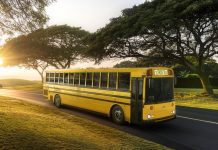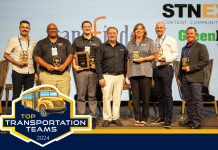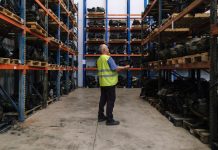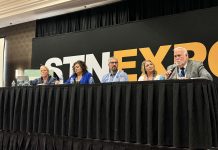This content is brought to you by Nuvve.
The Electricity Emergency
On August 31, an extended heatwave commenced in the state of California during a prolonged drought that also threatened wildfires. A sustained 10-day period of record high temperatures meant air conditioners were running everywhere, people were trying to stay cool as temperatures exceeded 100 degrees.
The National Weather Service deemed the situation an extreme heat event, and the California Independent System Operator (CAISO) issued a heat bulletin forecasting high electric demand and then issued a historic series of Flex Alerts across the state as peak load was projected to reach a new record high for demand on the state’s energy grid with a load forecasted to exceed 51,000 megawatts on September 6. Flex Alerts ask Californians to reduce their electricity consumption between 4 and 9 p.m. to save power and reduce the risk to California’s electric grid. California’s electric grid.
California electric school buses (ESB) were also encouraged to pause charging during that window – except in the Cajon Valley Union School District (CVUSD) where ESBs equipped with Nuvve’s bidirectional vehicle-to-grid (V2G) software began discharging their excess electricity back onto the grid.
Nuvve Pioneers Electric School Bus Fleet V2G in the U.S.
Just a month prior, V2G technology experts from Nuvve and the local utility, San Diego Gas & Electric had interconnected CVUSD’s electric fleet of six buses to the grid – setting them up with Nuvve’s specially-equipped, V2G-capable DC fast chargers allowing them to discharge electricity under California’s Emergency Load Reduction Program.
The ELRP is activated when the CAISO calls a Flex Alert. It’s a voluntary program for residential, commercial, and industrial customers who opt in to help balance electricity supply and demand. And it provides participants with monetary incentives when they do their part to reduce the load on the stressed system, earning $2 for each kilowatt hour of electricity that ELRP participants make available to the grid.
CVUSD became the first V2G electric school bus (ESB) project to become operational in Southern California. Now, the district, Nuvve and the local utility are helping to advance clean air and climate goals while also bolstering grid reliability. It was also the first V2G project to combine the electricity from multiple ESB batteries in multiple locations transforming their electric batteries into a virtual power plant (VPP) that could be dispatched on demand.
In October, Ramona Unified School District in San Diego County became the second operational V2G school district site with eight Nuvve chargers and electric Blue Bird buses.
“Nuvve cares about our community and about partnering with local school districts to provide clean transportation to students. Electric school buses reduce the impact on the grid while parked, and ultimately help fight the effects of climate change,” said Gregory Poilasne, Nuvve CEO and chairman.
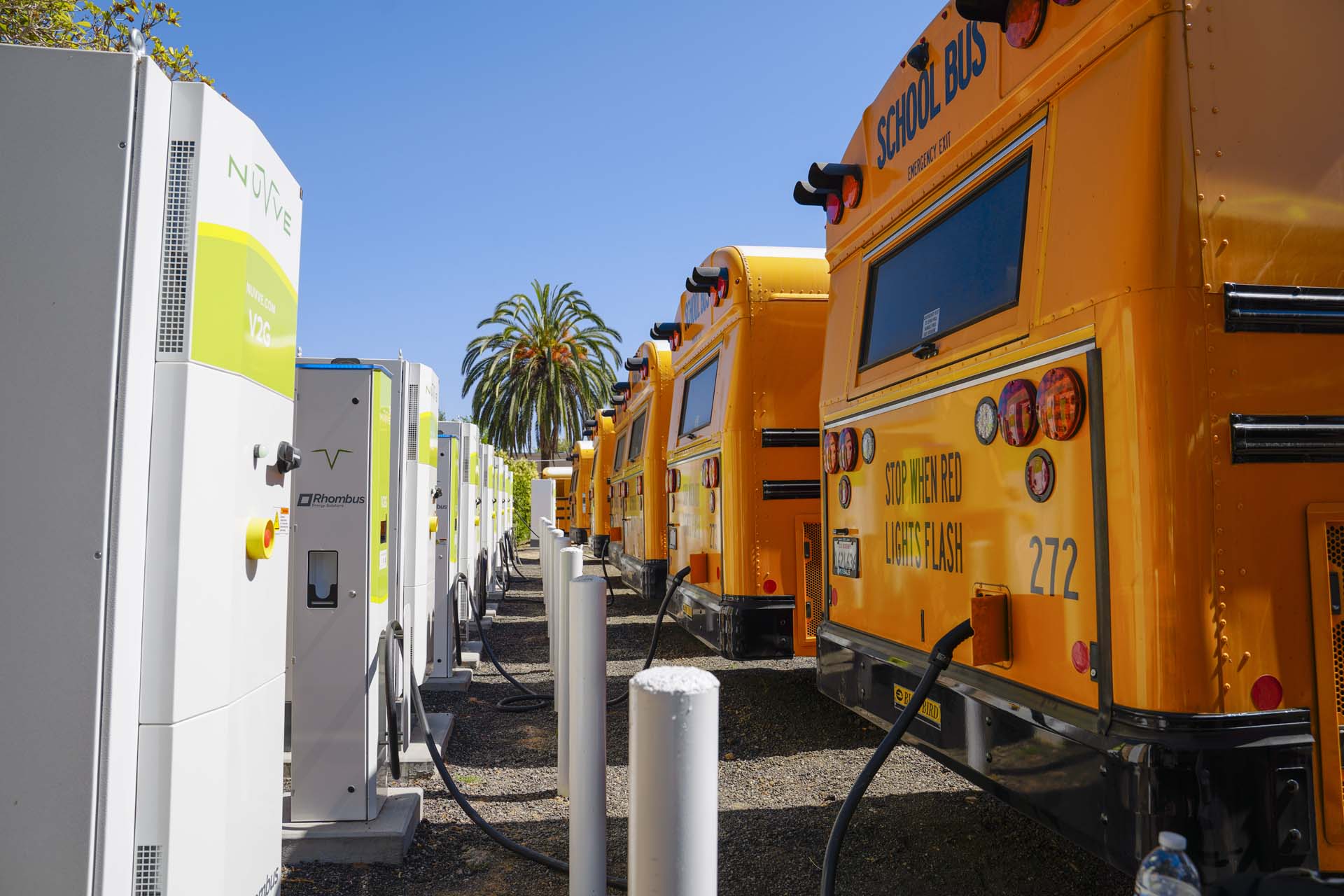
“The school bus batteries can be aggregated as a virtual power plant,” said Ted Smith, president and chief operating officer of Nuvve. “In California, school districts are paid for that electricity as well, which immediately helps reduce the cost of transitioning to electric transportation and, over the life of the buses and chargers, significantly reduces the total cost of ownership.”
During the first nine days of extreme heat in California, Nuvve’s Grid Integrated Vehicle (GIVe™) software platform successfully aggregated the CVUSD bus batteries discharging 650 kilowatt hours (kWh) of energy back to the grid, which is a greenhouse gas offset of 140 kilograms of carbon dioxide equivalent (CO2e) and enough electricity to power 277 homes.
“Our main focus is to get kids to and from school safely, but if there are other levels of service we can use these vehicles for, like supporting the power grid. That’s a great, useful, dual purpose for these vehicles,” said Tysen Brodwolf, director of transportation at CVUSD.
Nuvve’s technology manages the aggregation and discharging of the CVUSD fleet’s mobile storage capacity and is fully interoperable with the SDG&E utility-scale systems used to manage distributed energy resources such as batteries but also rooftop solar and similar sources.
The Future of V2G Fleets
Soon, more of Nuvve’s V2G-capable charging stations at school districts in San Diego County will be interconnected with SDG&E’s grid, and Nuvve will be aggregating more school district electric fleets across multiple school districts to respond to future CAISO emergencies.
“This is the point where things are starting to scale and it’s very exciting,” said Smith.
Imagine the positive impact as fleets of buses, postal delivery vehicles, garbage trucks, city and municipal vehicles, and government fleets such as police, fire, and military vehicles are all collectively contributing to the solution, providing stored electricity back into the grid using bidirectional V2G technology.
As California Governor Gavin Newsom said the week following California’s historic heat events, “This vehicle-to-grid capacity is a gamechanger. You’ll be writing a lot more and talking a lot more about this—the opportunity for vehicles to be battery storage and then export their off-peak charge back onto the grid during the peak to absorb more load. This is the future.”
Future-proof Your ESB Fleet with V2G DC Fast Chargers
As gas prices soar, many school districts and elected officials are looking at ESBs and V2G DC fast charging infrastructure.
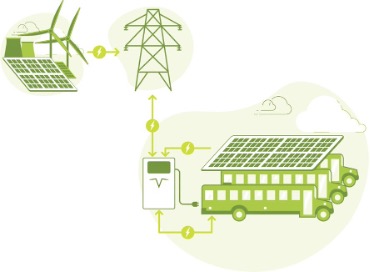
1. Avoid Extensive Charge Times: Batteries for electric vehicles continue to grow in capacity. School buses will likely have 300+kWh batteries in the near future. So, the max output of charging stations makes a huge difference in how long it takes to fully charge. Nuvve’s 60kW DCFC, for example, can charge a 150kWh bus battery in under 3 hours while the average Level 2 AC charger takes over 8 hours.
Here’s a chart with more examples:

2. Generate Revenue with Your Buses: More and more utilities recognize the critical role V2G will play to intelligently integrate EVs to the grid. From California to Colorado to New Hampshire, utilities are willing to pay for V2G services and are partnering with schools to take advantage of the energy storage potential of bus batteries. By investing in V2G charging stations today, your school is setting itself up for value-added streams of revenue.*
*Requires a V2G-capable electric school bus and interconnection agreement with local utility. Nuvve can help.
3. Long-Term Site Planning: Just like fuel islands at your bus yard, electric charging infrastructure requires site planning and construction, which is a long-term investment. By investing in DC fast charging now (versus just Level 2 stations), your school’s site will be ready to charge your buses for the next 10-15 years. (FYI, Nuvve offers full site planning and construction management services, so you don’t have to engage multiple vendors to go electric!)
4. V2G-Specific Funding: The EPA, which will be responsible for administering some of the infrastructure bill funding, recognizes the importance of V2G. There are funds available specifically for V2G charging solutions. (Bonus: Nuvve’s Grants and Fundraising team can help!)
5. Renewable Energy Integration: Did you know V2G allows your bus battery to store energy from renewable sources such as solar and wind? That means that your buses can be charged using clean energy sources (if available at your site or through your utility), reducing the need for energy from fossil-fueled power plants. So, in addition to creating cleaner rides for your students, V2G helps create cleaner communities!




